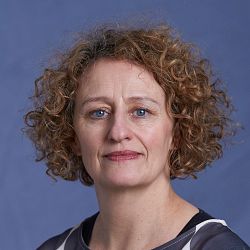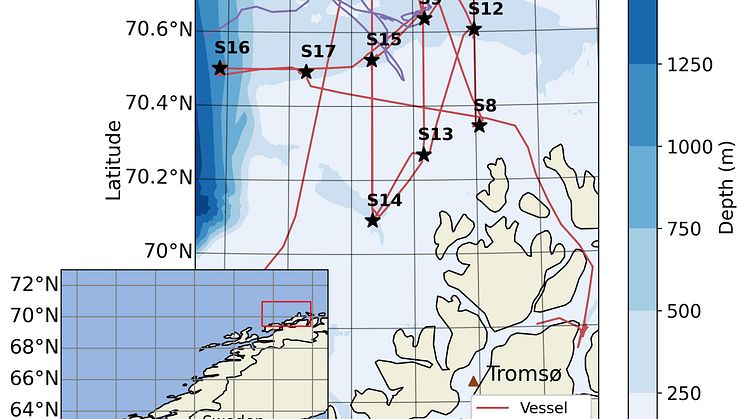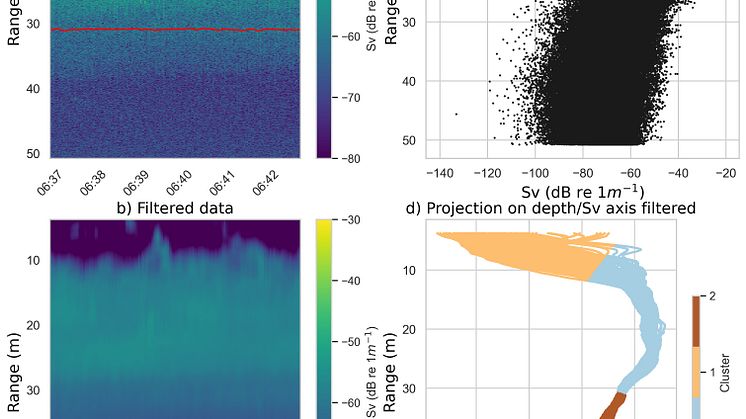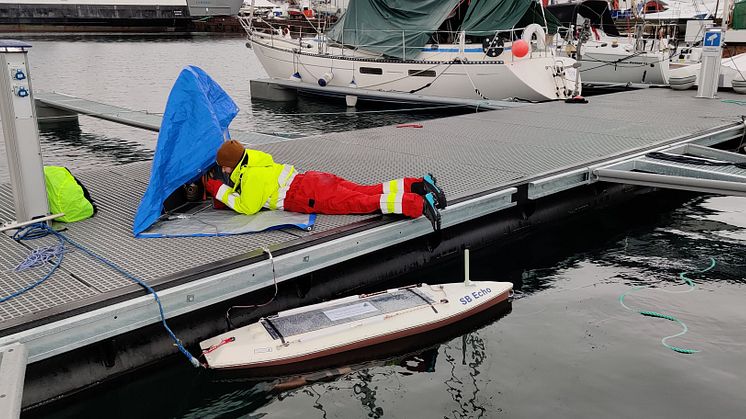
Nyhet -
Autonomous vehicles mapping zooplankton and fish
Autonomous vehicles, gliders, equipped with oceanographic sensors can now be easily deployed from ships to extend a science data collection period, access areas that are challenging to reach with a traditional science cruise vessel or increase the spatial resolution of ocean data. However, for active acoustic data without a parallel data collection with net and trawl data from a ship, it is difficult to analyze the data from autonomous vehicles with traditional scientific methods. In June 2018, we deployed an autonomous surface vehicle, Sailbuoy (Offshore Sensing AS) designed as a small autonomous sailboat. Equipped with solar panels and a sail instead of an engine, this platform is ideal of active acoustic data collection. The Sailbuoy collected data with a broadband active acoustic sensor, state-of-the-art scientific fish finder, on a fishing bank in northern Norway (70˚N) for a few weeks heading south.
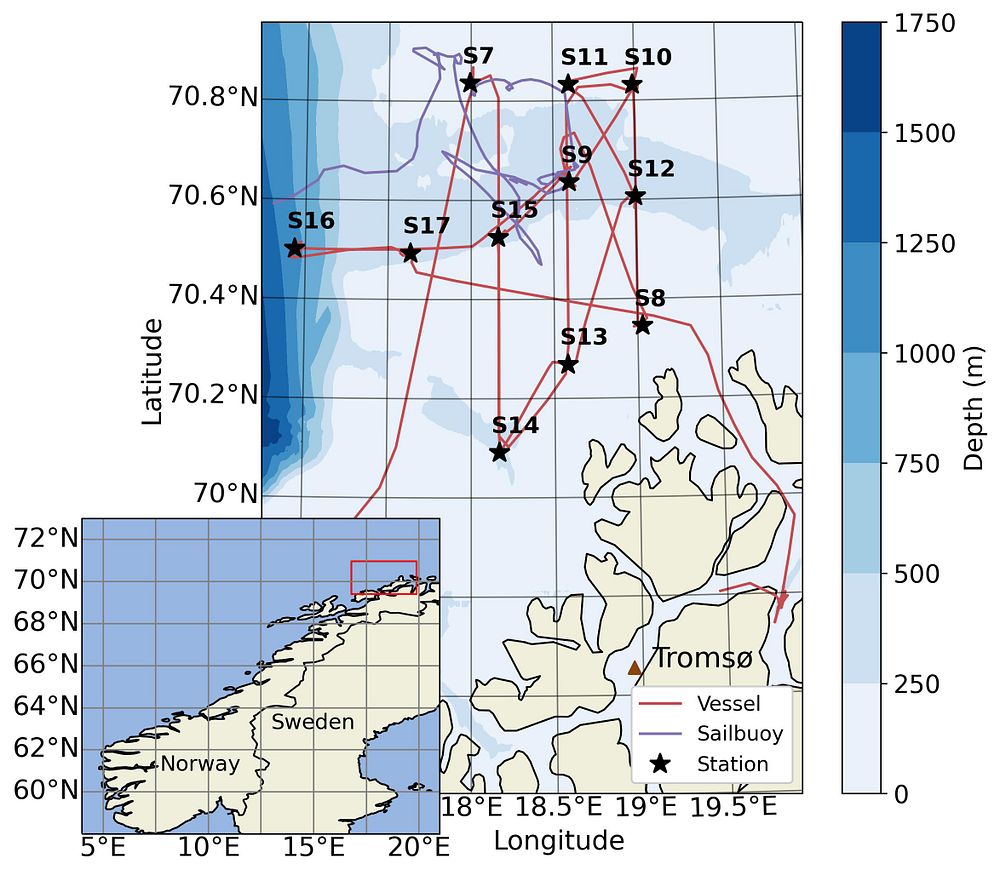
Figure 1: The data collection area
In a recently published paper, lead by Muriel Dunn, a PhD student at Memorial University of Newfound and Akvaplan-niva AS, we use Sailbuoy data to calculate densities of different taxonomic groups in aggregations of zooplankton and small fish. The densities are calculated using the inverse method, a method that extracts information from the broadband acoustic signal. The inverse method is well suited for gliders because relies less on net and trawl densities than traditional techniques. We found that our autonomous surface vehicle of choice, a Sailbuoy (Offshore Sensing AS), and a broadband echosounder (EK80, 283-383 kHz, Kongsberg Maritime AS) detected higher densities of mobile zooplankton, with the inverse method compared to the net and trawls results. We conclude that the inverse method applied to broadband autonomous acoustic environmental assessments can improve density estimates of near-surface aggregations because it reduces the avoidance bias and increases the spatio-temporal resolution of data collection efforts.
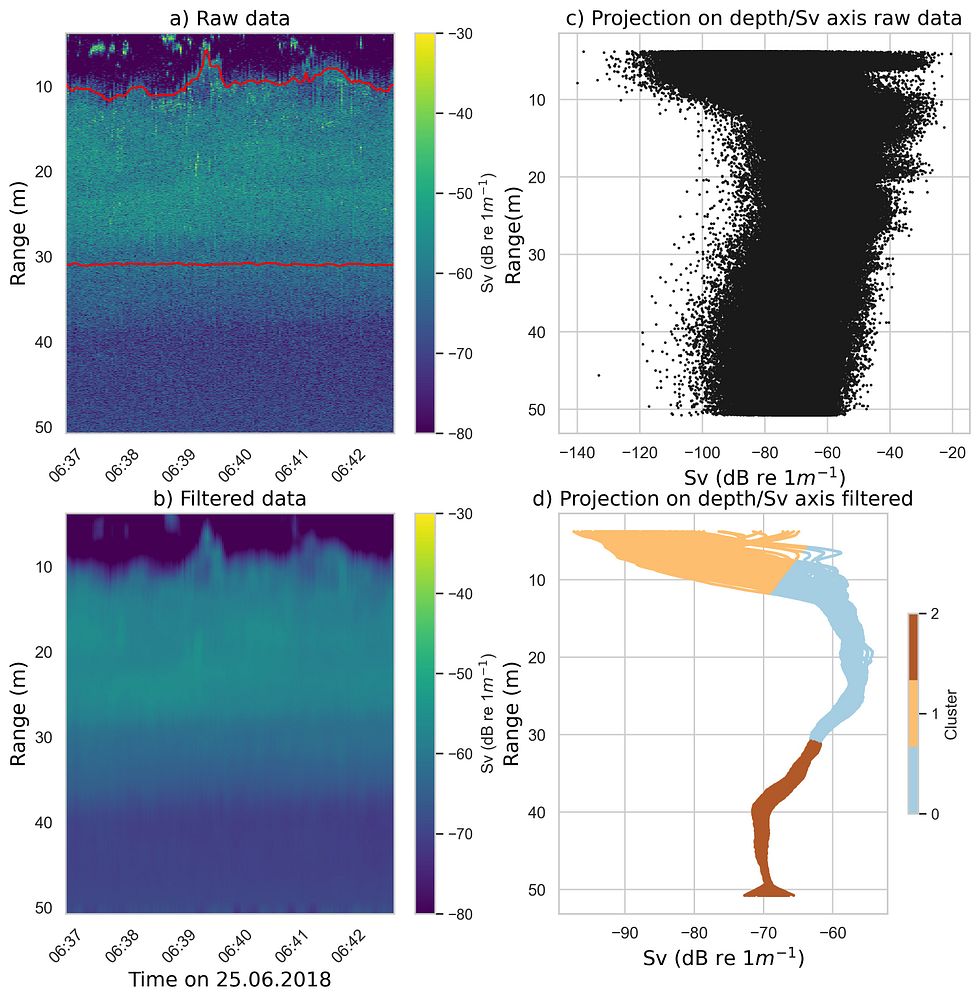
Figure 2: Outline of clustering algorithm to detect layers of zooplankton and fish
Link to publication:
https://doi.org/10.1139/cjfas-...
https://cdnsciencepub.com/doi/...
